Ever dreamt of cruising down the highway one moment and then seamlessly transitioning into a serene waterway the next? You dream of a car that can travel safely on land and water. Amphibious cars offer the perfect blend of land-based convenience and aquatic exploration.
They offer thrill-seekers, outdoor enthusiasts, and anyone with a taste for adventure the freedom to conquer land and sea without compromise.
This article presents 10 amphibious cars that are accessible to anyone, including near-forgotten older models like the Amphicar and newer versatile luxury SUVs like the semi-amphibious YangWang U8. Without further ado, let’s dive into a world where the road ends and the water begins.
Best UTVs: The Top 10 Side-by-Sides For Discerning Shoppers (Ranked By Categories)
List Of 10 Amphibious Automobiles You Can Buy
- Prodrive Watercar
- Rinspeed sQuba
- Amphicar
- Gibbs Aquada
- Dutton Surf
- Rinspeed Splash
- Hobbycar B612
- Watercar Panther
- CAMI Amphicar
- BYD YangWang U8
1. Prodrive Watercar
- Price: $211,000
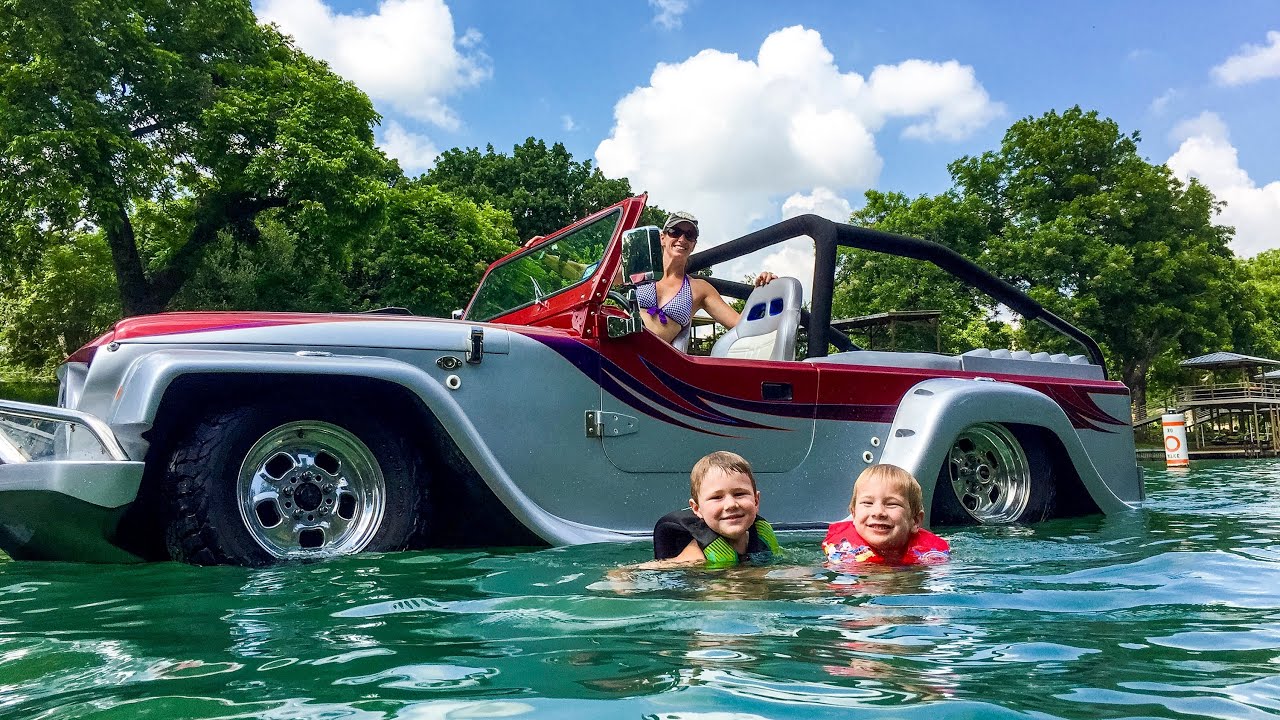
Photo credit: watercarsforsale.com
The Prodrive Watercar is a product of a motorsport and technology company based in the UK. Priced at around $211,000 (£165,000), Prodrive’s Watercar combines the capabilities of a high-performance sports car with those of a boat.
The amphibious vehicle features a lightweight and aerodynamic design to reduce drag in air and water. The chassis is made of carbon fiber and aluminum, ensuring strength and durability while keeping weight to a minimum.
Powering the Watercar is a specialized, marine-grade propulsion system that lets it conquer land and water. On land, the Watercar handles much like a conventional sports car, with responsive steering and agile handling characteristics.
2. Rinspeed sQuba
- Price: $2 Million
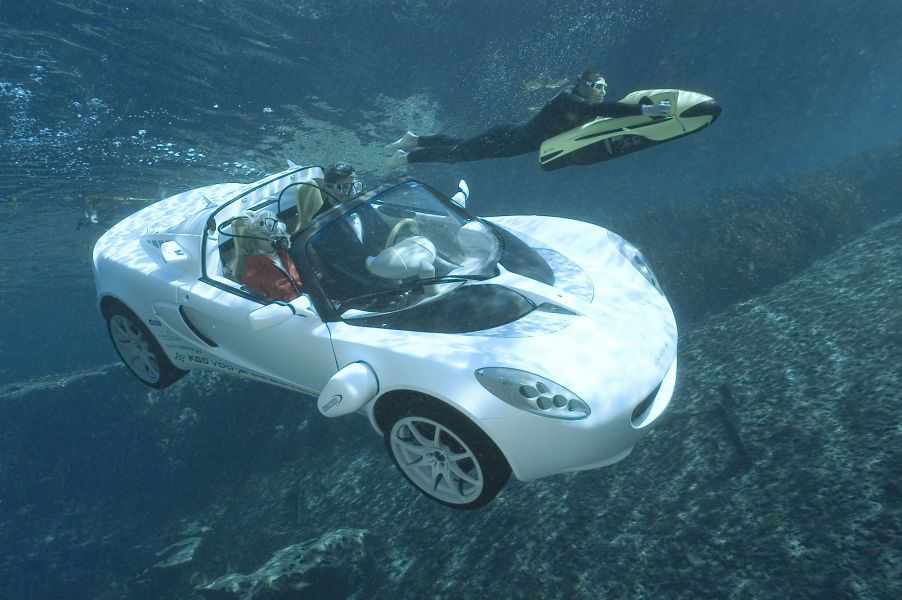
Photo credit: Rinespeed AG
The Rinspeed sQuba is a groundbreaking concept car developed by a Swiss automotive company known for its innovative designs. Unveiled in 2008, it is a unique and functional amphibious diving car designed to be used on the road, above water, and underwater. The sQuba gained widespread attention for being the world's first real submersible car.
At its core, the sQuba is based on the chassis of a Lotus Elise, extensively modified to achieve submersible capabilities. The car features a fully electric powertrain, including electric motors for propulsion both on land and underwater, as well as a rechargeable battery system.
Beyond the ability to travel on the water's surface, the sQuba’s most remarkable feature is its ability to submerge underwater. This is made possible by a combination of buoyancy control systems, waterproof seals, and specialized engineering to ensure the vehicle remains watertight at depths of up to 10 meters (33 feet).
The sQuba can be driven into the water from a boat ramp or directly from the shore, and it can navigate underwater using its propellers while maintaining stability and control. The 's interior can accommodate two occupants in a comfortable and futuristic cockpit.
The car's windshield is replaced with a reinforced acrylic dome, providing a clear view of the underwater environment.
Additionally, the interior features waterproof materials and controls, as well as safety features like scuba diving equipment and emergency breathing apparatus. The Rinspeed sQuba concept car is priced at around $2 million for the concept model, a rare gen for the ultra-rich.
3. Amphicar 770
- Price: Up to $100,000
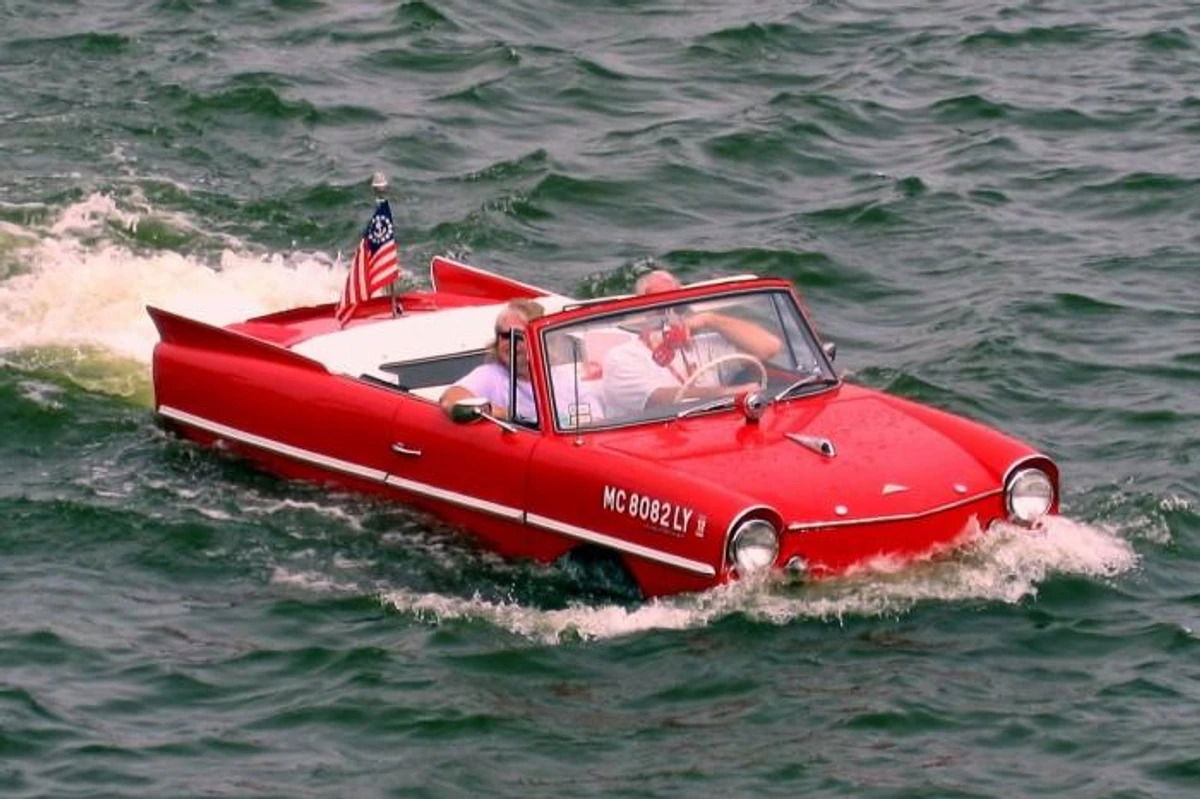
Photo credit: Hemmings
The Amphicar is a vintage amphibious vehicle launched at the 1961 New York Auto Show. It was designed by German engineer Hans Trippel and manufactured by the Quandt Group at its Amphicar factory in West Germany.
The Amphicar was one of the few civilian amphibious vehicles ever mass-produced for the consumer market. It was powered by a rear-mounted Triumph 1.1-liter four-cylinder engine producing 44 horsepower, which drove the rear wheels on land and also provided propulsion in the water.
The transition between land and water modes was facilitated by retractable land wheels and twin propellers mounted at the vehicle’s rear. While the Amphicar was capable of reaching speeds of around 70 mph (113 km/h) on land and 7 knots (13 km/h) in the water, it was not particularly efficient or fast in either mode compared to dedicated land vehicles or boats.
However, its novelty and practicality as a dual-purpose vehicle garnered interest from consumers, and approximately 3,878 units were produced between 1961 and 1968.
Today, the Amphicar remains a sought-after collector's item and a symbol of the ingenuity and ambition of its era. On average, a well-maintained Amphicar can cost anywhere from $40,000 to $100,000. Rare or pristine examples may command even higher prices.
4. Gibbs Aquada
- Price: $250,000

Photo credit: Gibbs Amphibians
The Gibbs Aquada is a high-speed amphibious vehicle developed by the New Zealand-based Gibbs Sports Amphibians founded by Alan Gibbs. Introduced in 2003, the Aquada gained attention for its impressive, record-setting performance on land and water.
The Aquada looks very much like a convertible sports car. It is powered by a typically GM-sourced, rear-mounted V6 engine coupled with a specially designed jet propulsion system, allowing the Aquada to reach speeds of up to 30 knots (56 km/h) on the water and over 100 mph (160 km/h) on land.
Transitioning between land and water modes is seamless with retractable wheels and a hydraulically operated hull, which adjusts to the vehicle's position and provides stability in the water. The Aquada's hull design allows it to navigate through choppy waves and moderate swells without overly discomfiting its occupants.
While the Gibbs Aquada was met with enthusiasm from enthusiasts and potential buyers, production numbers remained relatively low due to its high cost and limited market demand. The Gibbs Aquada was priced at around $250,000, with just 100 units planned for customer delivery. They turn up now and again at auctions.
5. Dutton Surf
- Price: $28,000
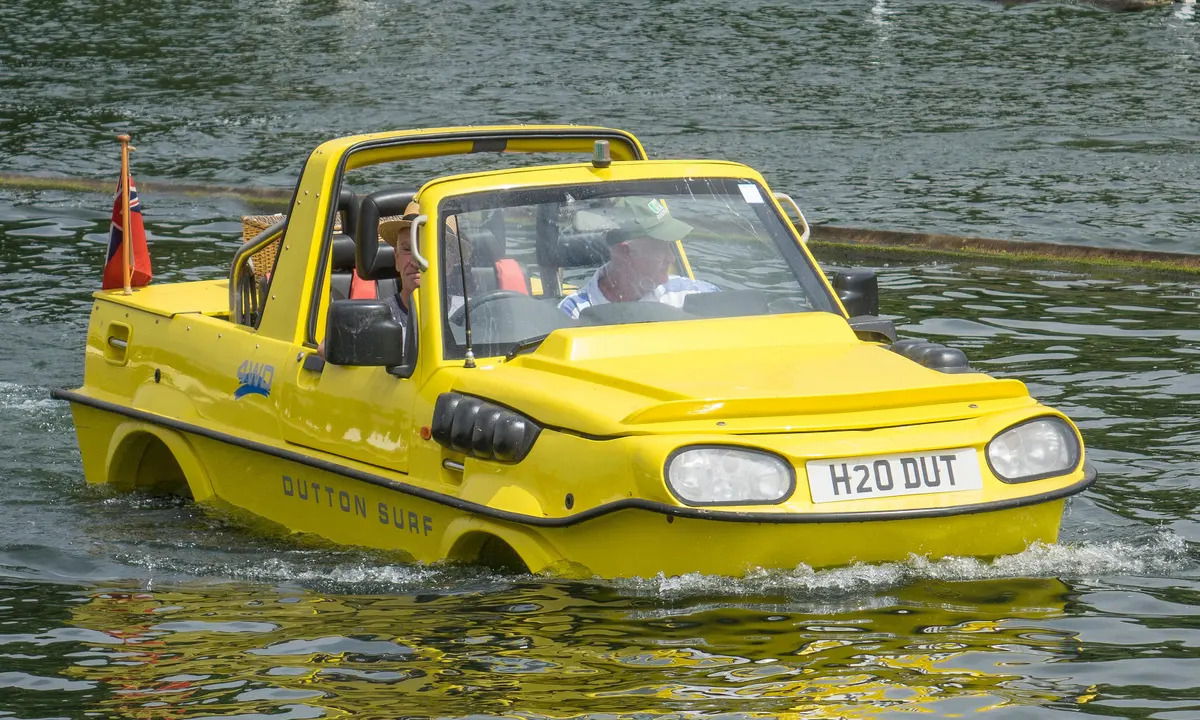
Photo credit: The Guardian
The Dutton Surf is designed and manufactured by Dutton Cars, a British automotive company founded by Tim Dutton. Introduced in the late 1990s, the Dutton Surf is a compact amphibious car based on the chassis of the popular offroader Suzuki Jimny.
The Surf features a unique fiberglass body and a lightweight aluminum hull. It is powered by a small gasoline engine typically sourced from the Suzuki Jimny. Transitioning between land and water modes is achieved through retractable wheels and a hydraulically operated hull.
While its top speed on land is relatively modest, typically around 60 mph (97 km/h), it makes up for this by reaching speeds of up to 6 knots (11 km/h) in the water. The Dutton Surf’s interior can take two occupants in a compact yet comfortable cabin, with basic amenities such as seating, instrumentation, and storage space.
While it may lack some of the luxury features found in other amphibious vehicles, the Dutton Surf offers a practical and affordable means to an amphibious car. It is priced at around $28,000 (£22,000).
See also:
Spinning into Savings: The 10 Best Budget-Friendly Cars for Donuts and Drifting
6. Rinspeed Splash
- Price: $1.5 Million
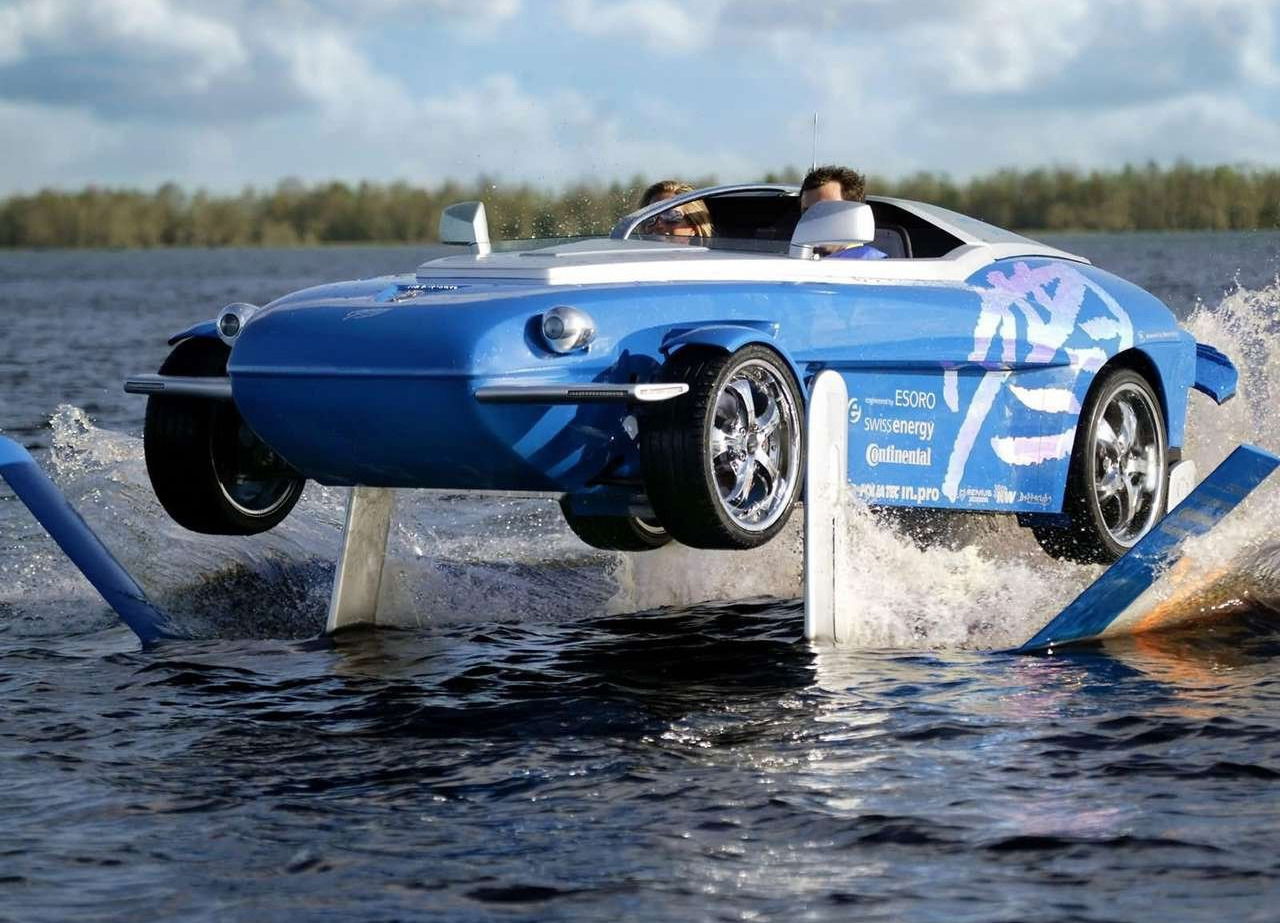
Photo credit: Rinspeed
The Rinspeed Splash is an amphibious concept car designed and created by the Swiss automotive manufacturer Rinspeed in 2004. This innovative vehicle combines the features of a car and a hydrofoil boat, allowing it to travel on both land and water.
The Rinspeed Splash features a lightweight body made of carbon fiber and can achieve speeds of up to 50 mph on water and 124 mph on land. It features a 750cc two-cylinder four-stroke engine and a unique retractable hydrofoil system for water travel. The Splash showcases Rinspeed's futuristic design and engineering capabilities.
7. Hobbycar B612
- Price: $420,000 Approx.

Photo credit: Hobbycar
Introduced in 1994, the French-made Hobbycar stood out like a sleek, technologically advanced fish in a sea of clunkers. Conceived by ex-F1 engineer Francois Wardavoir, the car’s brilliance lay in the meticulously engineered mid-engine configuration, a feat achieved with the help of Le Mans-winning engineer Philippe Beloou and ace designer Gérard Godfroy.
Sporting a transversely-located Peugeot diesel engine strategically nestled between the front and rear axles, the Hobbycar acquired perfect balance, something you don’t see every day in the world of waterborne automobiles.
This engineering marvel, with its 93-horsepower 1.9-litre engine and Citroen's renowned hydro-pneumatic suspension system, could seamlessly transition from conquering muddy slopes to cresting waves with grace.
The folding seatbacks and a retractable windscreen made yacht stacking a breeze, while a combination of fiberglass and Kevlar kept the amphibious car agile and robust.
However, such innovation came at a price, quite literally, with a hefty price tag of the now-defunct French Franc 370,000 (approximately €384,000 or $420,000 in today’s money). Despite initial excitement, demand fizzled out, leaving only a handful of these aquatic marvels cruising the waves.
8. WaterCar Panther
- Price: $135,000
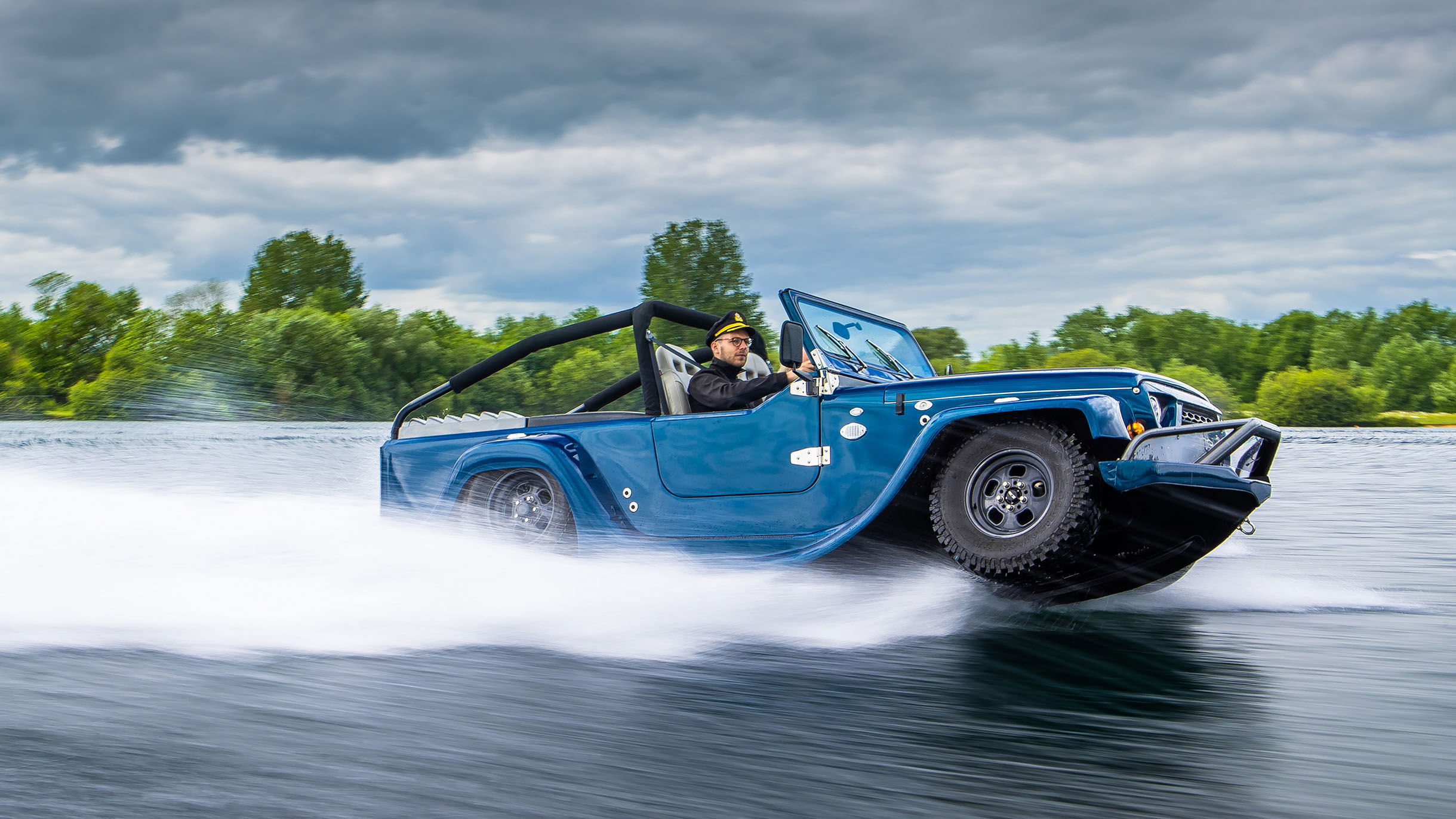
Photo credit: TopGear
The WaterCar Panther is a versatile amphibious vehicle designed and manufactured by the California-based WaterCar. Introduced in 2013, the Panther is one of the most capable amphibious cars on the market.
The fiberglass-bodied Panther resembles a high-performance off-road vehicle. It is powered by a rear-mounted engine delivering a top speed exceeding 80 mph (129 km/h) and up to 44 mph (71 km/h) on water and land, respectively.
9. CAMI Hydra Spyder
- Price: $182,000
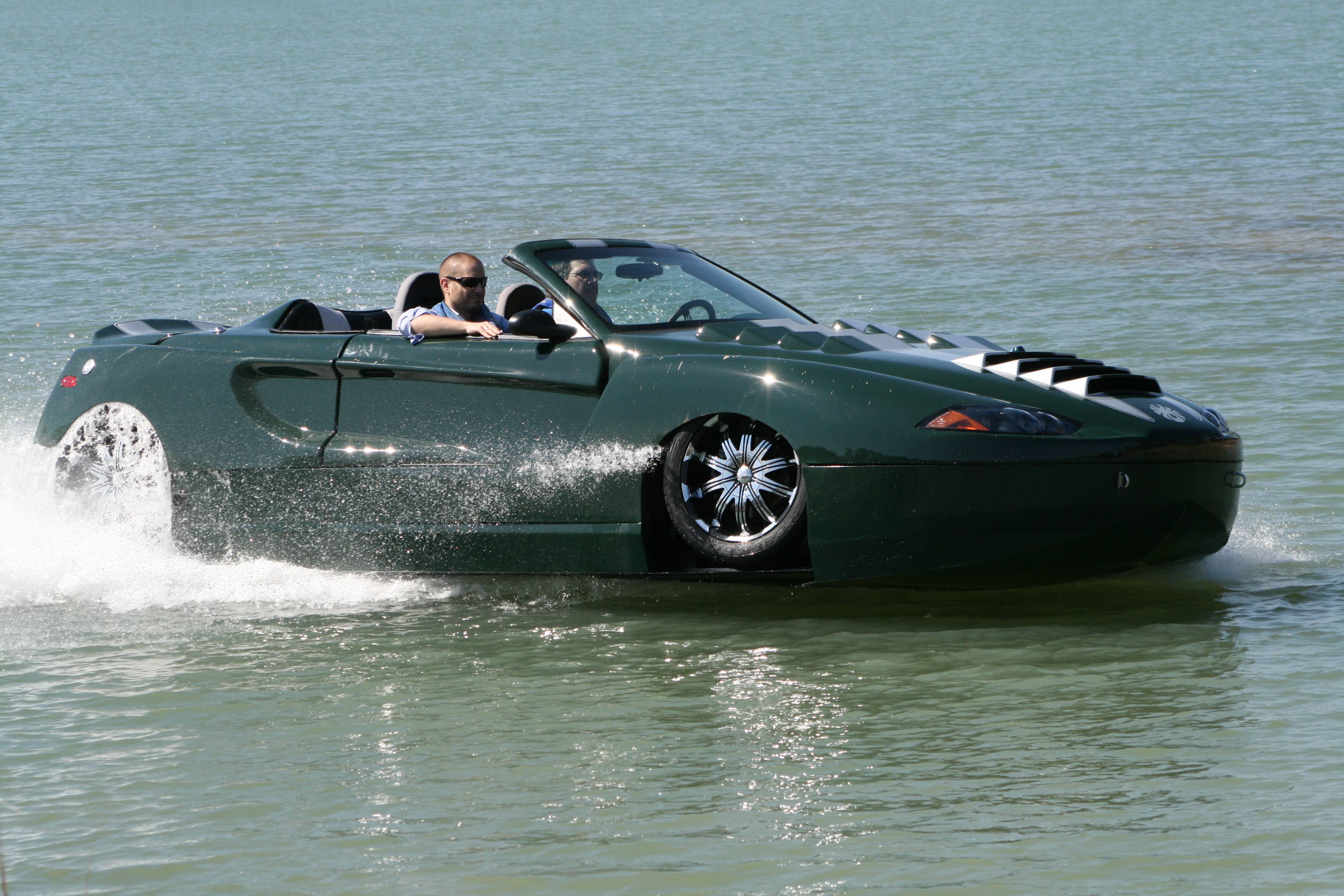
Photo credit: AllAboutAluminium
The CAMI Hydra Spyder is an amphibious vehicle manufactured by Cool Amphibious Manufacturers International (CAMI) based in South Carolina. It is a two-door convertible that can drive on land and water.
The Hydra Spyder is powered by a 450 horsepower Chevrolet 6.2-liter LS3 V8 engine enabling the car to achieve a top speed of 125 mph on land and a cruising speed of 46 knots (around 53 mph) in the water. The 2008 model is very rare, with only six units produced. The price is around $182,000.
10. BYD YangWang U8
- Price: $150,000

Photo credit: YouTube
Unlike the other amphibious cars on this list, the ability to travel on land and water isn’t the YangWang U8’s defining feature. The BYD YangWang U8 is a Chinese-made luxury SUV lauded for its innovative underpinning, hybrid technology, and luxury features.
Introduced in 2021, the YangWang U8 represents BYD's foray into the premium SUV market. It is available in gasoline-powered and electric variants, offering seating for up to seven passengers across three rows.
Premium materials such as leather upholstery, wood trim, and brushed metal accents adorn the cabin, creating a comfortable and upscale interior environment.
Besides the large touchscreen infotainment system with smartphone integration, digital instrument cluster, voice recognition, and a suite of driver assistance systems, the YangWang U8 also has a super-cool trick up its sleeves – the ability to float on water for at least 30 minutes as well as travel in water at around 1.9 mph (3 km/h).
In other words, BYD’s YangWang U8 is a semi-amphibious luxury SUV of the modern era with a fail-safe floatation feature in a water accident or flooding.